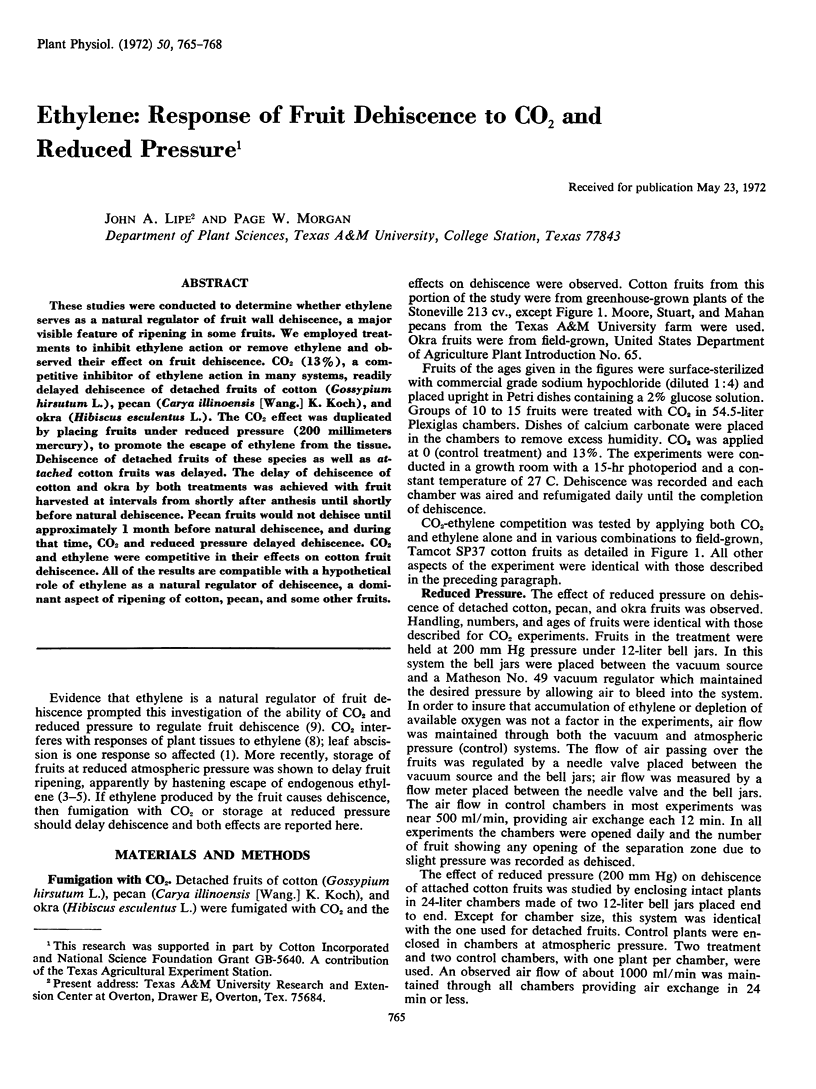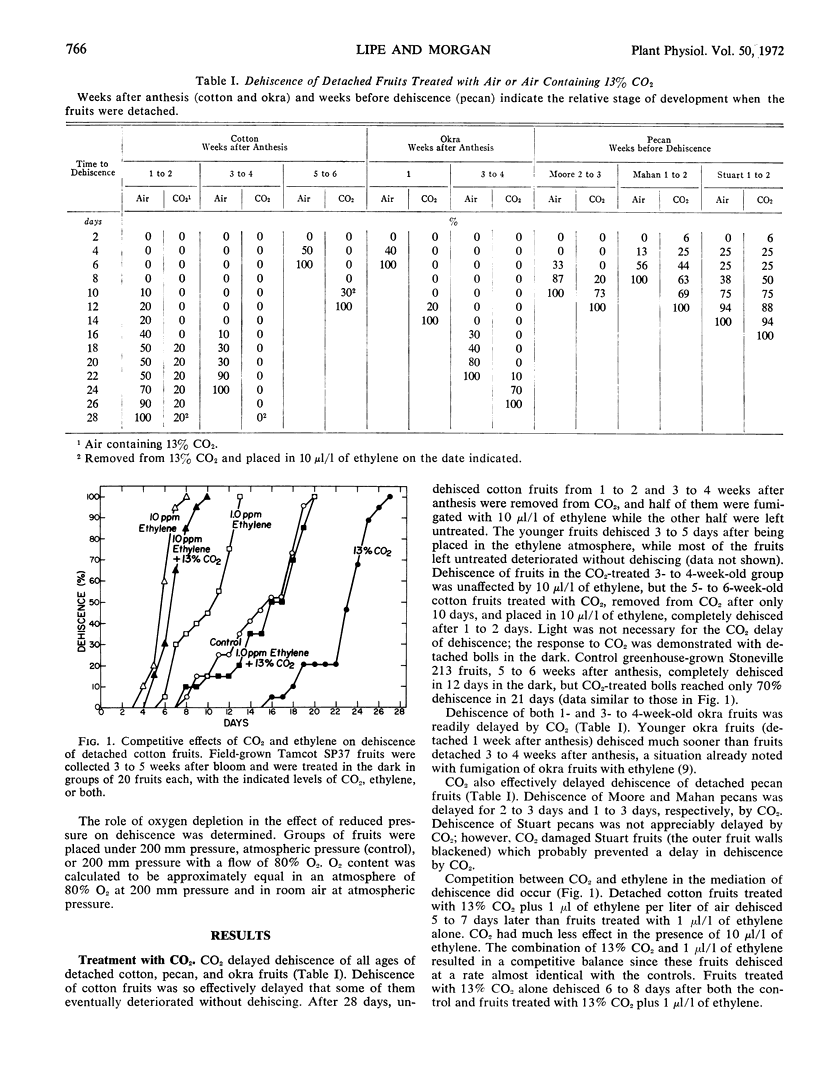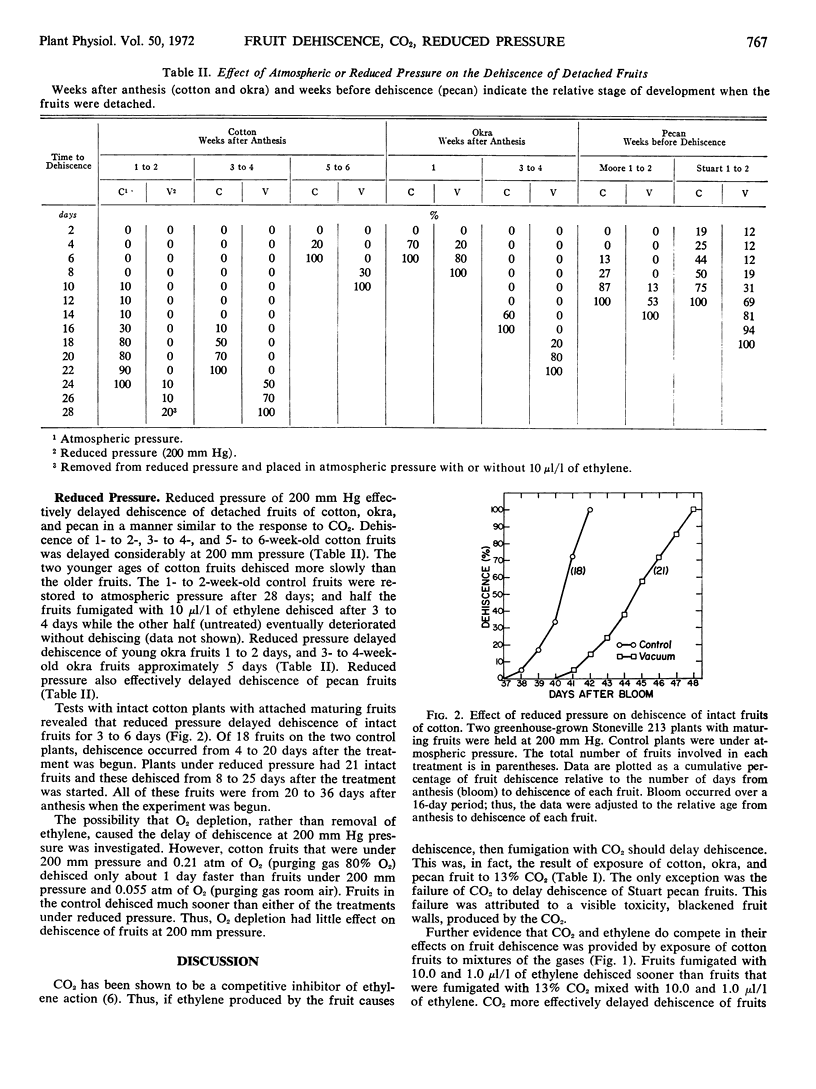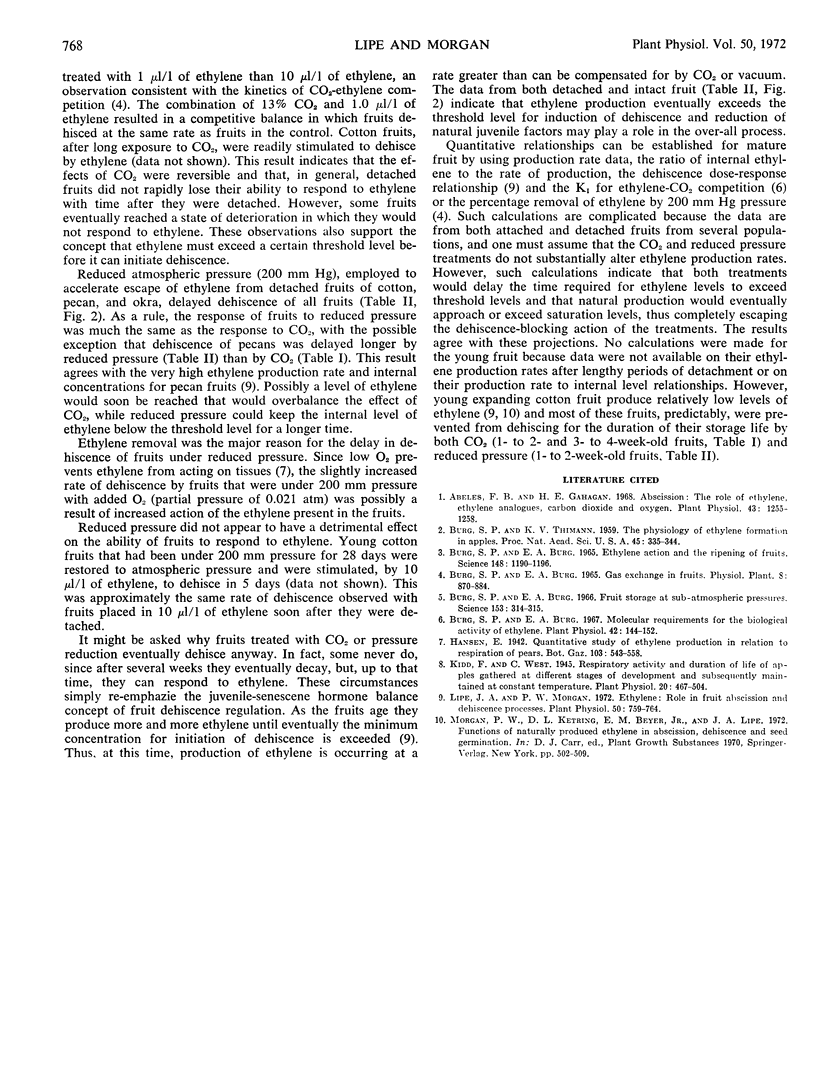Abstract
These studies were conducted to determine whether ethylene serves as a natural regulator of fruit wall dehiscence, a major visible feature of ripening in some fruits. We employed treatments to inhibit ethylene action or remove ethylene and observed their effect on fruit dehiscence. CO2 (13%), a competitive inhibitor of ethylene action in many systems, readily delayed dehiscence of detached fruits of cotton (Gossypium hirsutum L.), pecan (Carya illinoensis [Wang.] K. Koch), and okra (Hibiscus esculentus L.). The CO2 effect was duplicated by placing fruits under reduced pressure (200 millimeters mercury), to promote the escape of ethylene from the tissue. Dehiscence of detached fruits of these species as well as attached cotton fruits was delayed. The delay of dehiscence of cotton and okra by both treatments was achieved with fruit harvested at intervals from shortly after anthesis until shortly before natural dehiscence. Pecan fruits would not dehisce until approximately 1 month before natural dehiscence, and during that time, CO2 and reduced pressure delayed dehiscence. CO2 and ethylene were competitive in their effects on cotton fruit dehiscence. All of the results are compatible with a hypothetical role of ethylene as a natural regulator of dehiscence, a dominant aspect of ripening of cotton, pecan, and some other fruits.
Full text
PDF



Selected References
These references are in PubMed. This may not be the complete list of references from this article.
- Abeles F. B., Gahagan H. E. Abscission: the role of ethylene, ethylene analogues, carbon dioxide, and oxygen. Plant Physiol. 1968 Aug;43(8):1255–1258. doi: 10.1104/pp.43.8.1255. [DOI] [PMC free article] [PubMed] [Google Scholar]
- BURG S. P., BURG E. A. ETHYLENE ACTION AND THE RIPENING OF FRUITS. Science. 1965 May 28;148(3674):1190–1196. doi: 10.1126/science.148.3674.1190. [DOI] [PubMed] [Google Scholar]
- Burg S. P., Burg E. A. Fruit storage at subatmospheric pressures. Science. 1966 Jul 15;153(3733):314–315. doi: 10.1126/science.153.3733.314. [DOI] [PubMed] [Google Scholar]
- Burg S. P., Burg E. A. Molecular requirements for the biological activity of ethylene. Plant Physiol. 1967 Jan;42(1):144–152. doi: 10.1104/pp.42.1.144. [DOI] [PMC free article] [PubMed] [Google Scholar]
- Burg S. P., Thimann K. V. THE PHYSIOLOGY OF ETHYLENE FORMATION IN APPLES. Proc Natl Acad Sci U S A. 1959 Mar;45(3):335–344. doi: 10.1073/pnas.45.3.335. [DOI] [PMC free article] [PubMed] [Google Scholar]
- Kidd F., West C. RESPIRATORY ACTIVITY AND DURATION OF LIFE OF APPLES GATHERED AT DIFFERENT STAGES OF DEVELOPMENT AND SUBSEQUENTLY MAINTAINED AT A CONSTANT TEMPERATURE. Plant Physiol. 1945 Oct;20(4):467–504. doi: 10.1104/pp.20.4.467. [DOI] [PMC free article] [PubMed] [Google Scholar]
- Lipe J. A., Morgan P. W. Ethylene: role in fruit abscission and dehiscence processes. Plant Physiol. 1972 Dec;50(6):759–764. doi: 10.1104/pp.50.6.759. [DOI] [PMC free article] [PubMed] [Google Scholar]


